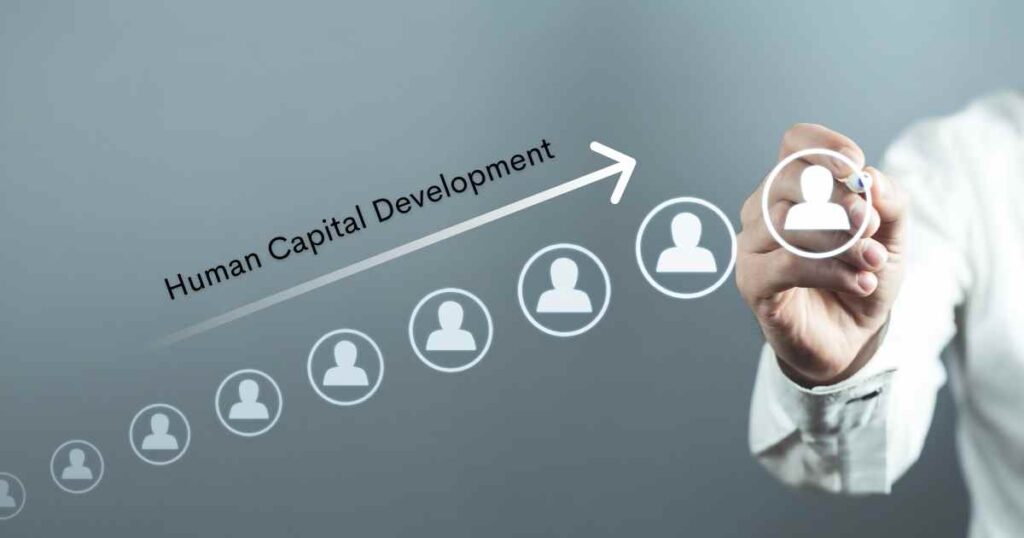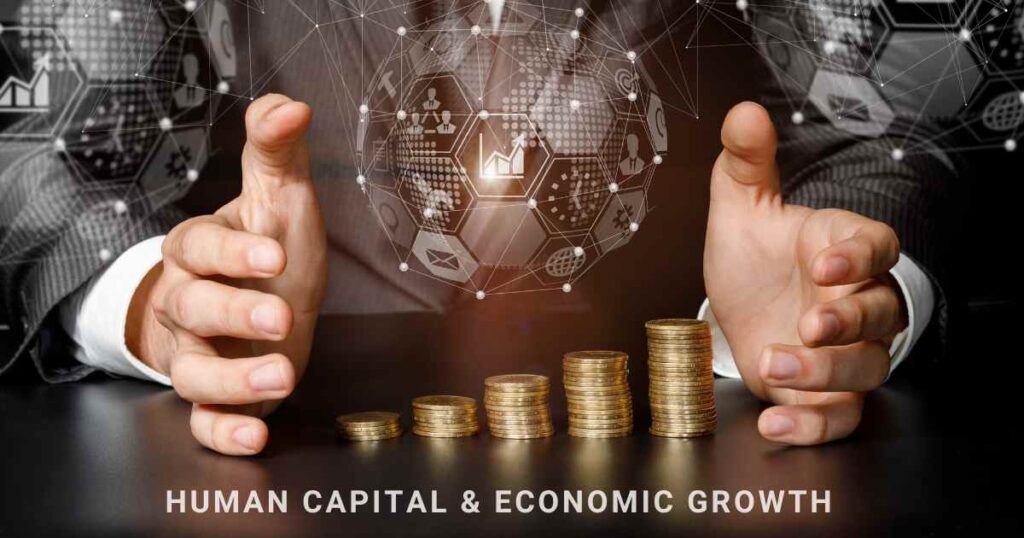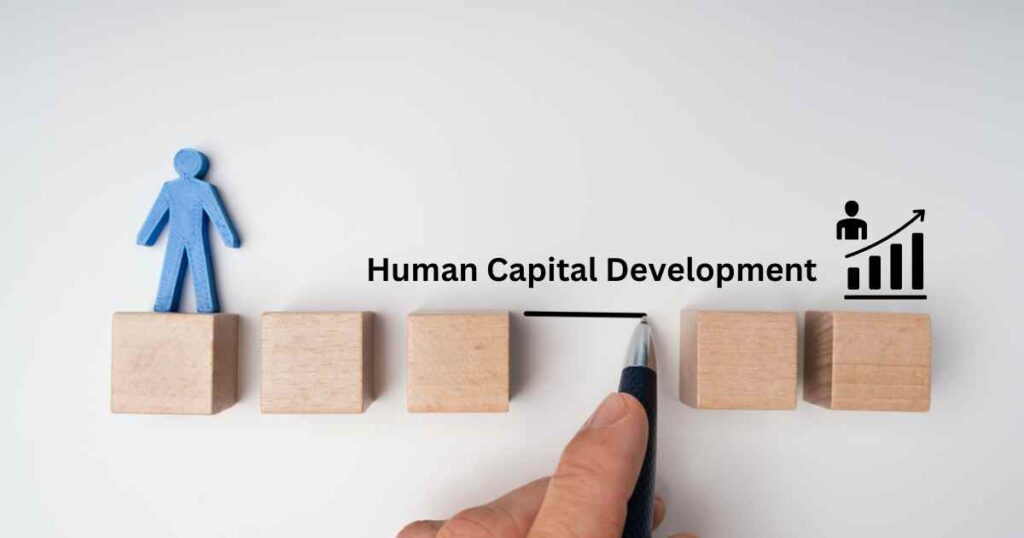Human resources hold immense value for any organization, nation, or community. This concept encompasses individuals’ abilities, expertise, experiences, and overall well-being, which allow them to contribute and create. The growth of human resources involves investing in individuals to maximize their potential and talents.
In this article, we’ll delve into the essence of human resource growth, its significance, its various elements, and its connection to economic progress and the objectives of sustainable development.
What is human capital development?
Human capital development is the act of increasing the productive qualities of labor force by providing more education and by increasing skill, health and nutrition level1. It is a holistic approach that considers not only the economic value of human capital, but also its social and environmental dimensions.
Oh, you know what? Human capital development is all about making people’s lives better and helping them be a part of society and the economy in a meaningful way. It’s like a big umbrella that covers so many things, like:
- Education: Giving everyone a chance to learn, from little kids to grown-ups, with top-notch and useful education that lasts a lifetime.
- Skills: Helping people get the know-how, brainpower, and people skills they need to rock it in today’s job market and whatever comes next.
- Health: Making sure everyone’s body and mind are in tip-top shape, and stopping illnesses and disabilities before they even start.
- Nutrition: Serving up the right kind of grub for folks to grow and develop like they should.
- Social protection: Throwing a safety net out there for folks who need a little extra help, and making sure they get the social services they need.
- Empowerment: Standing up for gender equality, giving everyone a fair shot, and encouraging people to get involved in their community and stand up for their rights.
So, yeah, human capital development is like this awesome mix of everything that helps people live their best lives and make a difference in the world.
Why is human capital development important?

Human capital development is important for several reasons. First, it is a key driver of economic growth and competitiveness. By enhancing the productivity and innovation of workers, human capital development can increase output, income, and profits. It can also attract foreign direct investment and foster entrepreneurship.
Second, human capital development is essential for achieving the SDGs. The SDGs are a set of 17 global goals that aim to end poverty, protect the planet, and ensure peace and prosperity for all by 2030. Many of the SDGs are directly or indirectly related to human capital development, such as:
- SDG 1: No poverty
- SDG 2: Zero hunger
- SDG 3: Good health and well-being
- SDG 4: Quality education
- SDG 5: Gender equality
- SDG 8: Decent work and economic growth
- SDG 10: Reduced inequalities
Third, human capital development is a moral imperative. Every human being has the right to live a dignified and fulfilling life. By investing in people’s capabilities and opportunities, human capital development can empower them to realize their potential and aspirations.
Components of Human Capital
Human capital can be divided into two types: general and specific2. General human capital refers to the skills and knowledge that are useful for a wide range of occupations and sectors. Examples of general human capital include literacy, numeracy, critical thinking, communication, teamwork, etc.
Specific human capital refers to the skills and knowledge that are specific to a particular occupation or sector. Examples of specific human capital include accounting, engineering, programming, etc.
Both types of human capital are super important for a country’s economic growth. General human capital helps workers be more adaptable and able to jump between jobs and industries. Specific human capital, on the other hand, helps workers become super efficient and specialized in their chosen field.
But here’s the kicker: there’s a bit of a balancing act between the two. Invest too much in specific human capital, and workers might struggle to switch gears if there’s a big change in technology or the market. But if you don’t invest enough in specific human capital, it could hold back productivity and innovation in certain areas.
Therefore, it is important to balance between general and specific human capital according to the needs and opportunities of each context.
Human Capital And Economic Development

There is a strong link between human capital and economic development. According to the World Bank3, countries with higher levels of human capital tend to have higher levels of income per capita, lower levels of poverty, higher levels of innovation, better environmental performance, etc.
The World Bank has developed a Human Capital Index (HCI) that measures how much countries invest in their people. The HCI ranges from 0 to 1, with higher values indicating better outcomes. The HCI is based on four indicators:
- Probability of survival to age five
- Expected years of school
- Harmonized test scores
- Survival rate from age 15–60
The HCI shows that there is a wide gap between countries in terms of their human capital. For example, the HCI for Singapore is 0.88, which means that a child born in Singapore today can expect to achieve 88% of their full potential. The HCI for India is 0.49, which means that a child born in India today can expect to achieve only 49% of their full potential1.
The gap between countries reflects the differences in their investments in human capital development. Countries that invest more in education, health, nutrition, and social protection tend to have higher levels of human capital and economic growth. For instance, according to a study by Investopedia, countries with higher levels of human capital have higher levels of income per capita, lower levels of poverty, higher levels of innovation, better environmental performance, etc.
Human capital development can also have positive spillover effects on other sectors and regions. For example, by improving the skills and health of workers, human capital development can increase the demand for goods and services, create new markets and industries, and generate more tax revenues. By enhancing the empowerment and participation of people, human capital development can also improve the quality of governance, reduce corruption, and promote peace and stability.
Conclusion
Oh, you know what? Developing human capital is just super important for making some real progress, both economically and socially. When we invest in folks’ skills and opportunities, we’re not only boosting their productivity and happiness, but we’re also helping them make a bigger impact on society and the economy.
But, here’s the catch: there’s no magic, one-size-fits-all solution to human capital development. Nah, we’ve got to tailor our approach to the unique needs and priorities of each country and region. Plus, it’s crucial to get everyone on board—governments, the private sector, civil society, and international organizations—to make it all work. Teamwork makes the dream work, am I right?
To achieve the SDGs and create a more prosperous and sustainable world for all, we need to invest more and better in human capital development. As the World Bank states1, “The best investment any country can make is in its people.”

